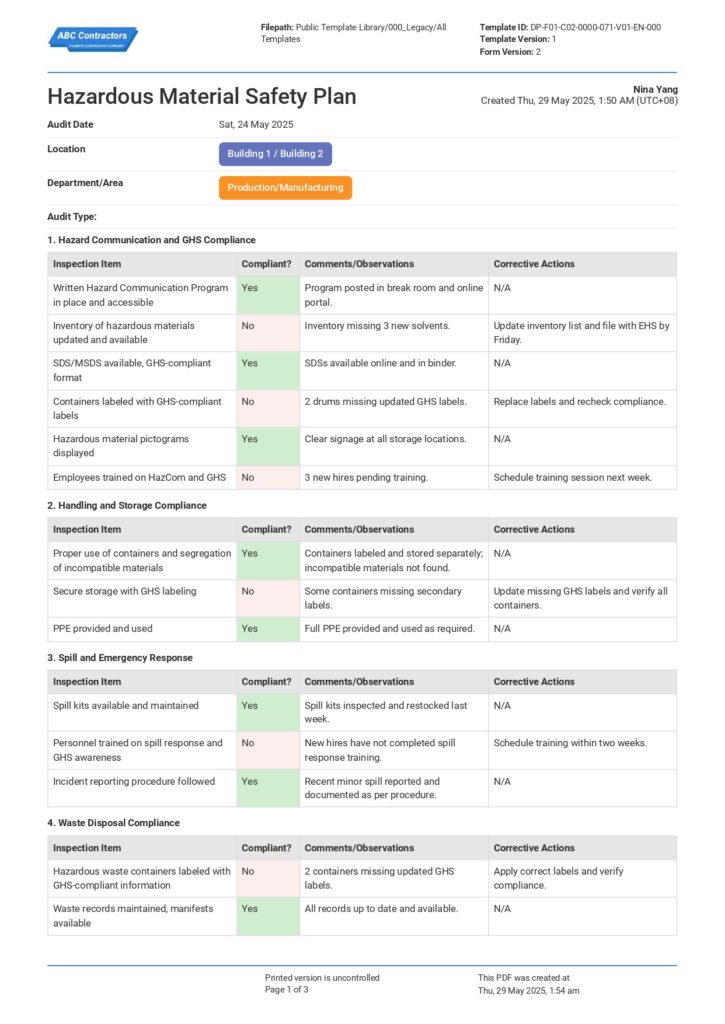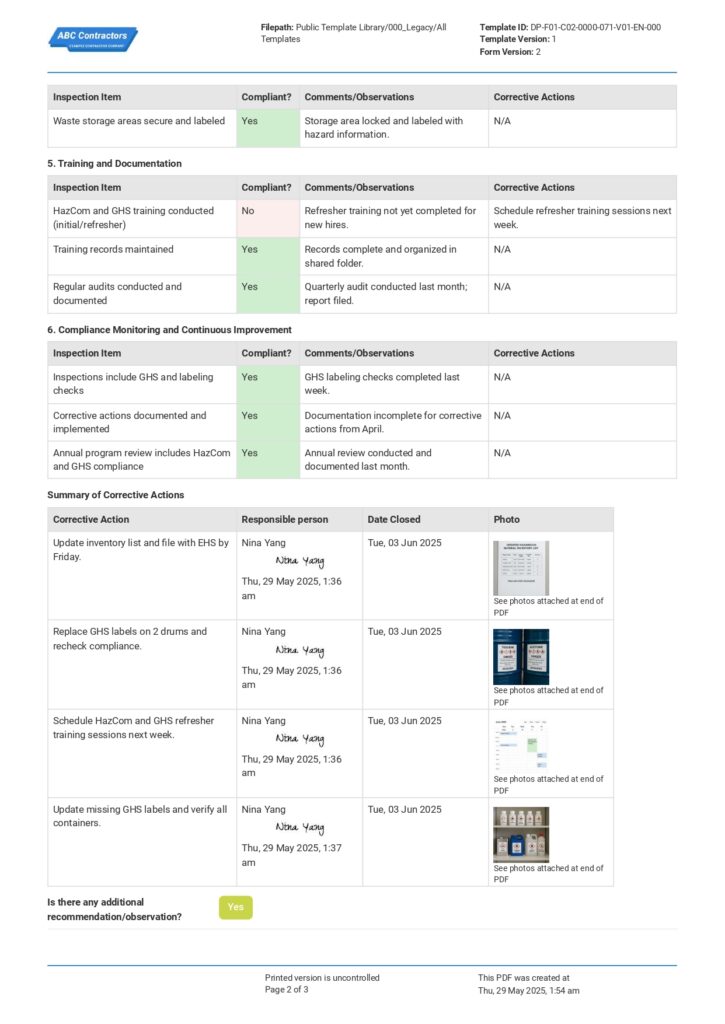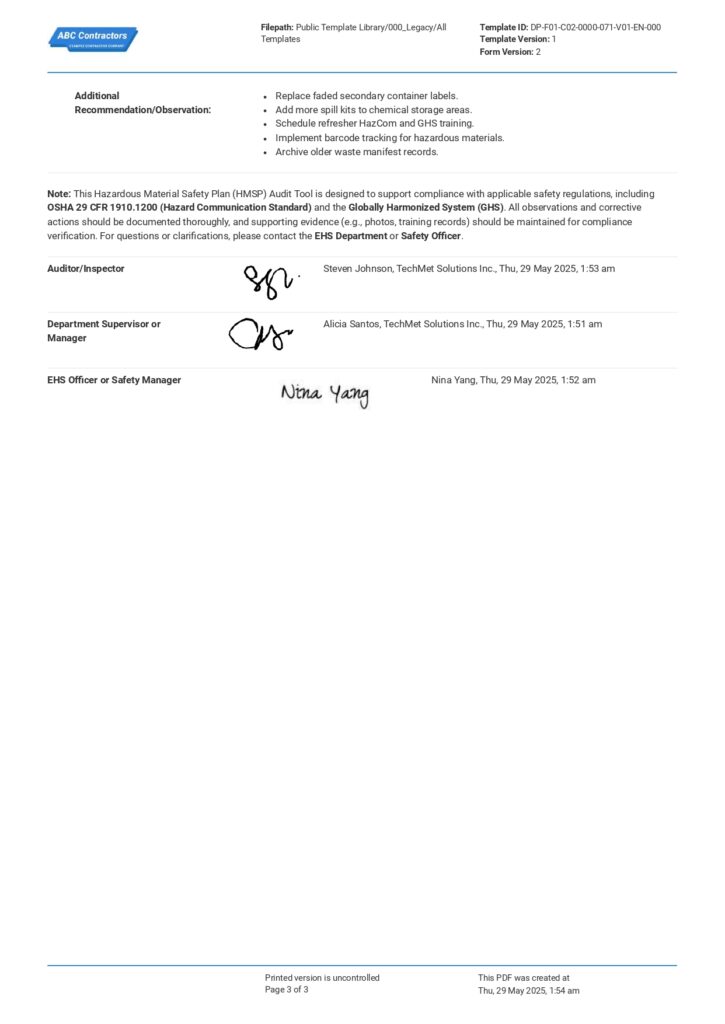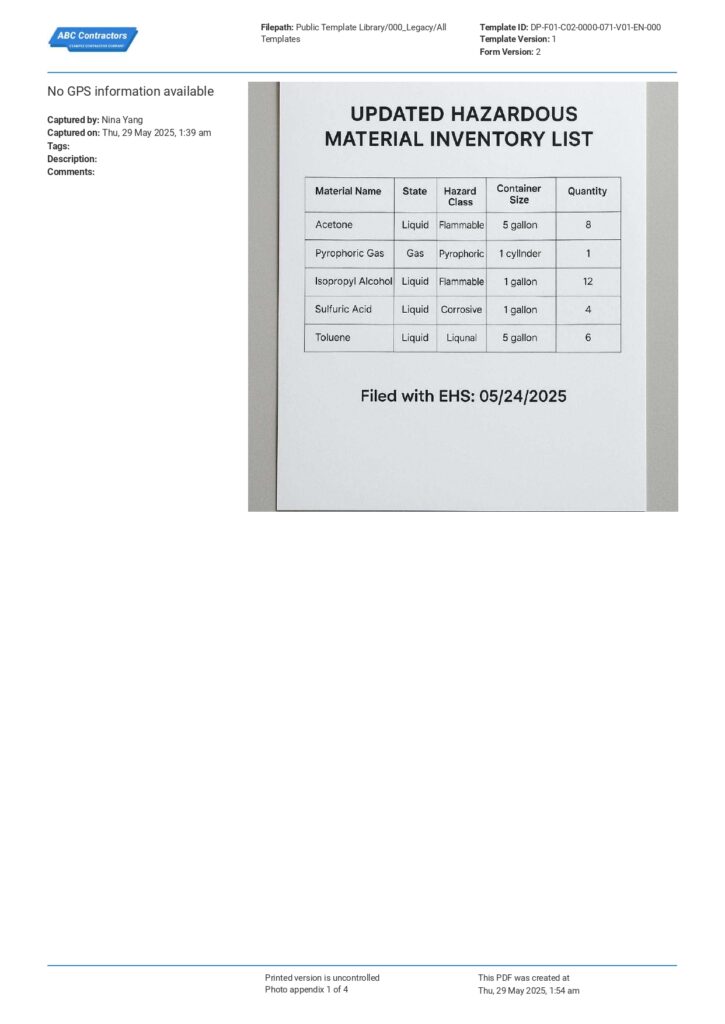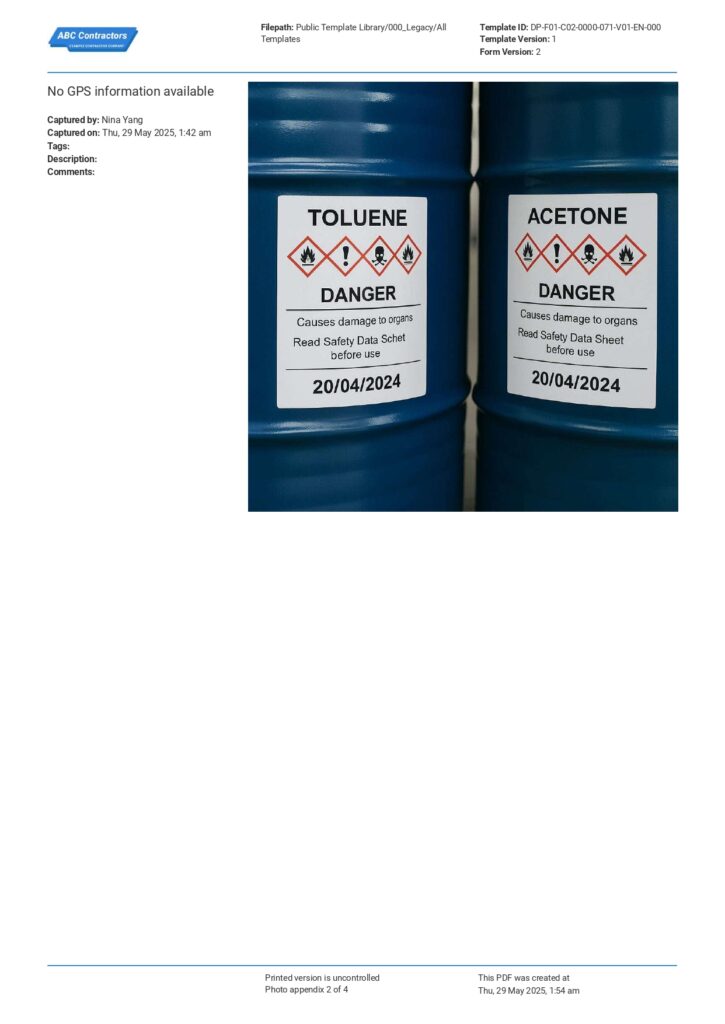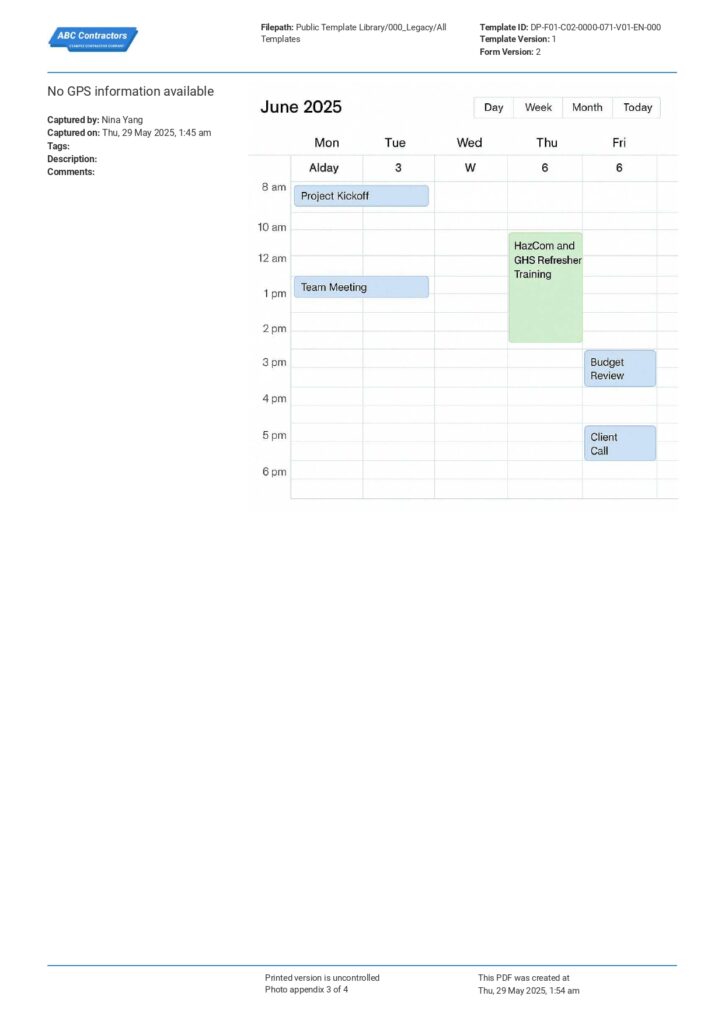Article Page – Which Hazardous Substance Does COSHH Not Cover
Which Hazardous Substance Does COSHH Not Cover?
In this article, we will explore the types of hazardous substances that are covered under COSHH and how to create a Hazardous Substance Safety Plan, and provide free digital solutions for safe storage, inventory, log, and monitoring activities.

Table of Contents
Article Summary
- Complying to COSHH is a legal responsibility of all employers to protect their employees to hazardous substance exposure. It's important to create and maintain a hazardous substance safety plan that is easy to update and use during internal audits.
- Hazardous substance not covered by COSHH are asbestos, lead, explosives and radioactive materials because they have their own regulations.
- Storage of hazardous substances is a critical safety aspect in every company that should not be overlooked.
Why is complying to COSHH necessary?
Complying with COSHH (Control of Substances Hazardous to Health Regulations) is necessary because it requires employers to adequately control exposure to materials in the workplace that threatens the health and safety of the workers.
COSHH provides multiple resources and guidelines especially in working with substances hazardous to health. This brief guide Working with substances hazardous to health: A brief guide to COSHH can give you a head start.
This law protects the employees while also helping companies avoid any liability that can promote business continuity. As they put it, “Ensuring your workers remain healthy may also lead to healthy profits.”
How to build a hazardous substance safety plan?
To build a hazardous substance safety plan, you need to start with hazardous substance identification, determine if it exists in your workplace, from product labels to process byproducts. Document it by building a hazardous substance inventory or a Chemical Inventory and then conduct a risk assessment aligned with regulatory standards.
This includes identifying which areas in the workplace pose a risk of exposure to the damaging effects of hazardous substance, it is a responsibility that lies with the employer or company.
COSHH does not specifically require a hazardous substance safety plan however it requires that companies have a full system for hazardous substance control.
This is the first line of defense for any company. It’s a structured approach to preparing for and responding to potentially unsafe scenarios resulting from the mishandling of hazardous substances.
Building a hazardous substance safety plan that you can easily update and use for internal audits ensures continuous improvement in your hazardous substance control in the workplace.
See this hazardous material safety plan below as an example.
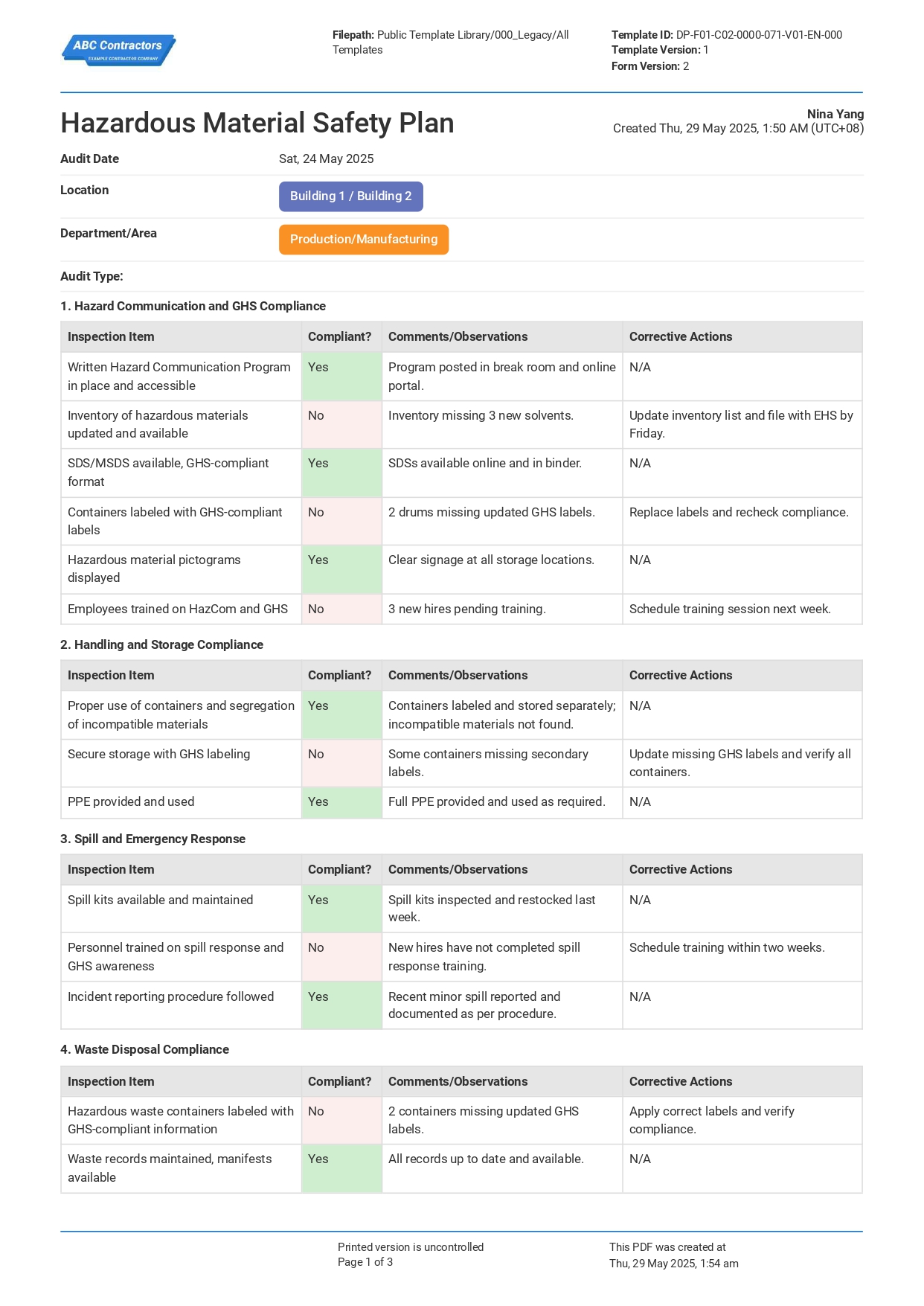
Use this Hazardous Material Safety Plan for free
Hazardous Substances not covered by COSHH
Which hazardous substance does COSHH not cover? COSHH (Control of Substances Hazardous to Health Regulations) does not cover hazardous substances that has their own specific regulations. Lead, asbestos, explosives, radioactive substances are not covered by COSHH. The following are its important indications:
Asbestos
This was used by many industries until it was banned in the late 90s because it is a dangerous substance that can cause cancer and noncancer diseases. Asbestos still exists in older buildings, so there are specific controls set such as safe removal methods, controlling exposure facilities and workers exposed must be well-trained of the controls set which are all included in an Asbestos Management Plan.
Lead
Lead is also not part of COSHH, if the lead form is either inhalable (dust, vapor or fumes), ingestible (powder, dust, paint or paste) or skin absorbable (alkyls or naphthenate) according to HSE, employers are liable to limit the exposure and follow the Permissible Exposure Limit (PEL), conduct medical surveillance, respiratory protection and worker training.
Explosives
In mining, oil & gas, construction where explosives such as dynamite or ANFO (Ammonium Nitrate Fuel Oil), explosives are quite common as a blasting agent. Given its criticality, these also have their own specific regulations specific to its hazard zones, storage area and personnel training.
Radioactive Materials
Radioactive materials such as cobalt, uranium and the likes pose great external exposure hazard from leakage, radiological or chemical toxicity and other forms of intake. Specific liabilities are set for handling, hazard identification, exposure control emergency preparedness which are also not covered under COSHH.
While these specific substances are not regulated under COSHH, a company using these substances must take into careful consideration and review the regulations set for these materials. The restrictions also have transferrable principles for substances covered by COSHH. The rules are also similar, but more explosive or toxic substances are stricter especially in terms of exposure and even storage to avoid accidents.
Which hazardous substance does COSHH cover?
Hazardous substances covered by COSHH are chemicals, products containing chemicals, fumes, dusts (including dusts that are process byproducts), mists, nanotechnology, gases and asphyxiating gases, and biological agents (germs). If the packaging has any of the hazard symbols, then it is classed as a hazardous substance. Germs that cause diseases such as leptospirosis or Legionnaires' disease and germs used in laboratories are also included. These hazardous substances are specified under the Health and Safety Executive's website.
When carrying out assessments to confirm if these specific substances are present within your workplace, identifying these hazards is highly necessary, from reading the product labels and safety data sheets (SDS) to assessing processes that can produce harmful substances in the process and the contacts of these materials.
After identification, create an inventory, such as a hazardous substance list or a Hazardous Chemicals Register, to detail each, including the risk assessments, which can be who is involved and exposed, and how. After this, carry out a plan in the workplace on how to effectively protect workers from exposure and, at the same time, secure the regulatory compliance, and regularly train them with a hazardous materials safety guide.
Important of hazardous substances storage and how digital solutions help
COSHH (Control of Substances Hazardous to Health) legally requires employers to control exposure to hazardous substances, which includes the safe and proper storage of hazardous substances. Beyond just adherence, when it comes to hazardous substances, you simply can’t just keep them in one dry area with controlled temperature or humidity and not worry about it until you need to find a material.
Without a complete and well-reviewed risk assessment, safe and secure storage of hazardous substances can be overlooked in workplaces, even in companies and establishments that handle supply, storage, and distribution of chemicals which should know better. Several case studies, such as those involving storage of chemicals, for instance, can trigger a domino effect from an explosion, followed by a fire, then a collapse of the whole establishment.
The following are critical aspects you need to consider in understanding how to store hazardous substance in the workplace:
Storage location of hazardous substances
Consider the storage location of the hazardous substances, such as the building structure and construction, environmental hazards, neighborhood area risks, and local regulations.
It goes without saying that structural integrity is integral in building a storage location but also involves consideration of the full load of people and materials housed in that building.
Consider possible fire scenarios and surroundings in case of an explosion. Is the area prone to flooding? Are there any other people in the community that might be affected in case of leakage? This might look like a structural consideration, but if the area is prone to other natural water hazards, then it can be dangerous for chemicals stored that are water reactive as well. The storage location of a hazardous substance is a critical safety aspect.
Waste disposal hazardous substances
Management of waste disposal is also a part of proper storage of hazardous substances. What is stored must also come out of the facility secured reducing the potential for leakage just as how it was stored. This is when company make use of a Waste Disposal Log to accurately record the disposals, in consideration to the hazardous substance being disposed.
Hazardous Substance Inventory Control System
Investing resources to build a good inventory system for hazardous substances will impact the effectiveness of secured storage in a company. Smart investments include making use of digital solutions such as Chemical Inventory Software, supplier audits or training personnels. Inventory is very important in supply and chain management, it means a good list of what we currently have and to know how to manage and control it.
Inspection of goods or hazardous substances should be separate and involves checking of the documentation accompanying the shipment such as purchase orders, SDS, and packaging labels.
Summary of COSHH hazardous substance coverage
Understanding what hazardous substances COSHH does and does not cover is one of the essential steps in creating a hazardous substance safety plan. Control of hazardous substances in the workplace means designing foolproof storage and making use of advanced set-ups for documentation and control to assure employers that they are fulfilling their duty of safeguarding their employees and securing their business. While it is the best choice to simply eliminate the hazardous substance, if it’s not possible, a company should work on using all means to make control measures effective.
Frequently Asked Questions
Is a Hazardous Substance Safety Plan required by COSHH?
Yes - a Hazardous Substance Safety Plan is required by COSHH to assess the risk, prevent and control exposure and use of control measures. COSHH mandates these elements in a safety plan so that businesses and teams can create a structured approach in protecting the health of the workers and ensuring accountability.
How is technology changing how people do hazardous substance risk assessments?
Technology is transforming risk assessments by replacing paper-based forms to digital forms you can access from your mobile or tablet,and streamline review and approval with digital solutions like Dashpivot. Teams can now collaborate remotely, manage documents in one platform, enjoy faster approval and certification.
Does Sitemate offer templates for hazard identification and risk assessments?
Yes - Sitemate offers ready-to-use and editable templates that can also be edited for your workflow. Companies of all sizes across multiple industries globally with a good safety management system are using these free templates and resources right now to streamline their safety audits.
Related resources
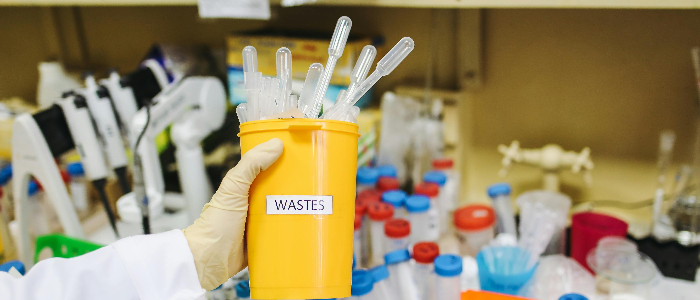
Hazardous Waste Management Plan
Streamline your waste handling processes with an efficient management plan document builder.
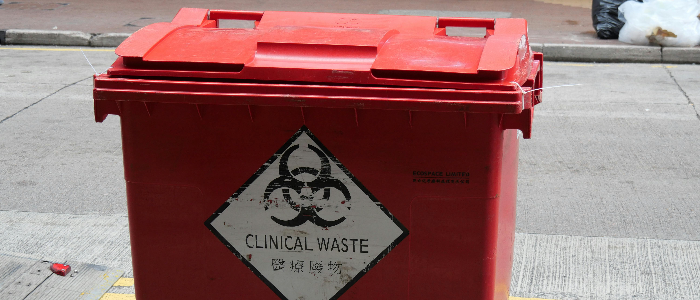
Contaminated Waste Disposal Log
Easily log disposed contaminated waste from your mobile device or tablet, efficiently.

Equipment Decontamination Checklist
Go through decontamination check items conveniently, and spot non-compliances easily during reviews
